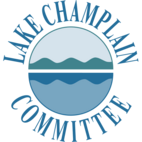
Water Chestnut Removal at Sandbar Wildlife Management Area - 8/5/2023
9:00 A.M. - 1:00 P.M.
Saturday, August 5 2023 (rain date Sunday, August 6)
Sandbar Wildlife Management Area - 1216 U.S. Rte 2, Colchester, VT 05446
Join LCC for a volunteer day harvesting invasive Water Chestnut! This species impairs native ecosystems by forming dense surface mats on the water and crowding out native species. If the plants are removed from the Lake before the seeds are dropped, water chestnuts can be eliminated. You can make a positive difference in the health of Lake Champlain, and every extra hand helps.

Be ready to get muddy--make sure to wear clothes you don't mind getting dirty or stained!
Please bring your own:
- Kayak or canoe and paddle(s)
- Personal flotation device
- Water
- Lunch and snacks
- Bug spray
- Change of clothes
- Hat
- Rain gear
- Rubber or gardening gloves (optional)
- Sunglasses
- Sunscreen
- Water shoes
Background on Water Chestnut


The European water chestnut, Trapa natans, is an aquatic plant with a submerged, flexible stem whose roots anchor into the mud of shallow lakes, ponds, and slow-moving streams. The stem can extend up to 16 feet toward the surface, where the plant will put out rosettes of glossy, floating, fan-shaped leaves. Each individual plant can produce up to 20 of these rosettes. The flowers grow at the center of the rosette and are solitary, small, white, and four-petaled.
In mid- to late summer the water chestnut will produce large seeds with four sharp orthogonal spines, which change color as they ripen from green to brown. Each rosette can generate 15-20 seeds, giving it a strong ability to spread. Because the water chestnut is an annual plant it depends on these seeds to reproduce – at the end of the summer the seeds fall to the muddy lake or river bottom and can remain viable there for up to 12 years.
Water chestnut is extremely competitive in shallow water with soft, muddy bottoms. It creates impenetrable floating canopies across long swaths of the water, often layering as it grows to be up to a foot thick. These mats make previously-fished areas inaccessible, and limit the movement of recreational boats and swimmers.
Due to the thick, overlapping nature of the canopy, light coming through the water column is often severely limited, which in turn limits the growth of native aquatic plants. Unlike these native plants, the invasive water chestnut has little nutritional value to waterfowl and other aquatic organisms. The dying back, and following decomposition of these mats reduces dissolved oxygen in the water. This can have severe negative effects on aquatic organisms, including potential fish kills. Water chestnut was first discovered in Lake Champlain in the 1940's.
The Lake Champlain Committee (LCC) has been a long-time supporter of aquatic invasive species funding for state environmental agencies, and has lobbied for a consistent budget to control these invasives. Each time funding has been lost, water chestnut populations have not only increased, but have spread north.
Tips for Harvesting Water Chestnut


While water chestnut is obvious when it has taken over a water body, finding and identifying individual plants can be tricky. Here are some tips for finding and removing the water chestnut when you’re out on the water:
Bring the right gear.
Bring and wear your PFD (personal flotation device) while out on the water. Wear gloves to protect your hands from the spiny seeds of the water chestnut. Wear sun protection and bring extra along to re-apply during a long day on the water. Have snacks and and plenty of water with you to keep you fueled and hydrated for a day outside.
Look thoroughly.
Although water chestnut can often be found in thick mats on the surface, it isn’t unusual for it to float just below the surface, hidden by duckweed or lily pads. Thoroughly search the water by running your fingers or a paddle under the surface to catch hidden invasives.
Remove the whole plant.
When you find a water chestnut, pull the stem all the way up to extract the whole plant from the water. One stem might produce several rosettes of leaves, so don’t be afraid to keep pulling!
Harvest plants in early to mid-summer.
The most successful harvests take place in early to mid-summer, when the seeds haven’t formed yet and the water chestnut mats aren’t thick enough to impede boat travel. It’s always vital to get to the plant before it has the chance to drop its seeds.
Cyanobacteria blooms are also more likely in the hot, still weather of late summer which can interfere with harvesting efforts as you don’t want to paddle or boat through a bloom or be exposed to cyanobacteria.
Contain the water chestnut.
You can fill a laundry basket, sled, bag, or the center of your canoe with the water chestnut you harvest. Be careful not to drop any of the plants you pull up back into the water, particularly if they are carrying seeds.
Gather and dispose of all plants when you are done.
Participating in official invasive removal events is a great way to be sure you have the proper permits for disposal. Remember that it is illegal to transport invasive species in the state of Vermont without a permit, even if you have good intentions. Consult the Vermont Department of Environmental Conservation if you are considering organizing a water chestnut harvesting effort.
Clean, drain, dry.
Clean, drain, and dry all water craft and equipment that has been used in the water before moving to a new location. While water chestnut cannot reproduce by fragmentation other aquatic invasives can, so this is good practice whenever you’re leaving a water body
